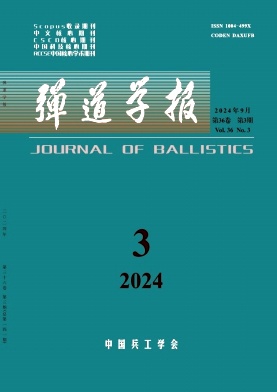Adaptive Navigation, Guidance and Control Techniques Applied to Ballistic Projectiles and Rockets
Q4 Engineering
引用次数: 0
Abstract
Accuracy and precision are the cornerstone for ballistic projectiles from the earliest days of this discipline. In the beginnings, impact point precision in artillery devices deteriorated when range were extended, particularly for non-propelled artillery rockets and shells. Later, inertial navigation and guidance systems are introduced and precision was unlinked from range increases. In the last 30 years, hybridization between inertial systems and GNSS devices has improved precision enormously. Unfortunately, during the last stages of flight, inertial and GNSS methods (hybridized or not) feature big errors on attitude and position determination. Low cost devices, which are precise on terminal guidance and do not feature accumulative error, such as quadrant photo-detector, seem to be appropriate to be included on the guidance systems. Hybrid algorithms, which combine GNSSs, IMUs and photodetectors, and a novel technic of attitude determination, which avoids the use of gyroscopes, are presented in this chapter. Hybridized measurements are implemented on modified proportional navigation law and a rotatory force control method. A realistic non-linear flight dynamics model has been developed to perform simulations to prove the accuracy of the presented algorithms.应用于弹道弹丸和火箭的自适应导航、制导和控制技术
从这门学科的早期开始,准确性和精确性就是弹道弹丸的基石。一开始,当射程扩大时,火炮装置的冲击点精度就会下降,特别是对于非推进式火炮火箭和炮弹。后来,惯性导航和制导系统被引入,精度与距离的增加脱钩。在过去的30年里,惯性系统和GNSS设备之间的杂交极大地提高了精度。不幸的是,在飞行的最后阶段,惯性和GNSS方法(混合或不混合)在姿态和位置确定方面存在较大误差。低成本的终端制导精度高且不具有累积误差的装置,如象限光电探测器,似乎适合纳入制导系统。本章提出了结合gnss、imu和光电探测器的混合算法,以及一种新的姿态确定技术,避免了陀螺仪的使用。采用改进的比例导航律和旋转力控制方法实现了混合测量。建立了一个真实的非线性飞行动力学模型,并进行了仿真,以证明所提出算法的准确性。
本文章由计算机程序翻译,如有差异,请以英文原文为准。
求助全文
约1分钟内获得全文
求助全文
来源期刊

弹道学报
Engineering-Mechanical Engineering
CiteScore
0.90
自引率
0.00%
发文量
2632
期刊介绍:
Journal of Ballistics is an academic journal published by China Association for Science and Technology (CAST) and sponsored by China Society of Military Science and Industry (CSMI) at home and abroad. Founded in 1989, it is the only academic journal in the field of ballistics in China. The purpose of the journal is to exchange the latest achievements and related applications in the field of ballistics, introduce the new technology of ballistic testing, broaden the channels of information exchange, exchange academic ideas, promote the development of ballistics and military-industrial technology, and work hard to achieve the modernisation of national defence.
Journal of Ballistics is a Scopus-listed journal, Chinese core journal, Chinese science and technology core journal and CSCD core journal. The Honorary Editor-in-Chief is Academician Li Hongzhi, an academician of the Chinese Academy of Engineering, and the Editor-in-Chief, Professor Wang Zhongyuan, is a Distinguished Professor of the Yangtze River Scholars Award Scheme.
Journal of Ballistics mainly publishes the latest research results in the fields of ballistics, including internal ballistics, intermediate ballistics, external ballistics, underwater ballistics, terminal ballistics, trauma ballistics, experimental ballistics, launch dynamics, aerodynamics, flight mechanics, navigation and guidance, ballistic design and control, ballistic system synthesis and analysis, ballistic test technology, ballistic and archery in general and the laws of motion of flying objects. Academic papers on the latest research results on the laws of motion of flying objects.
 求助内容:
求助内容: 应助结果提醒方式:
应助结果提醒方式:


